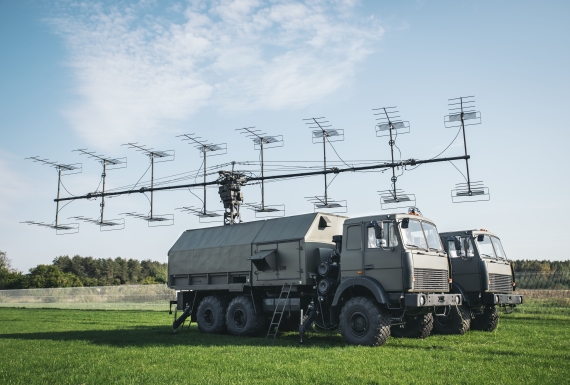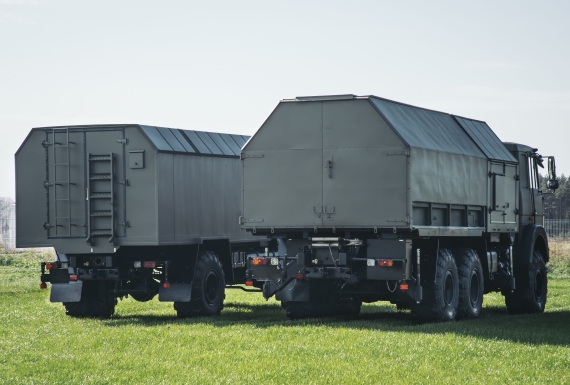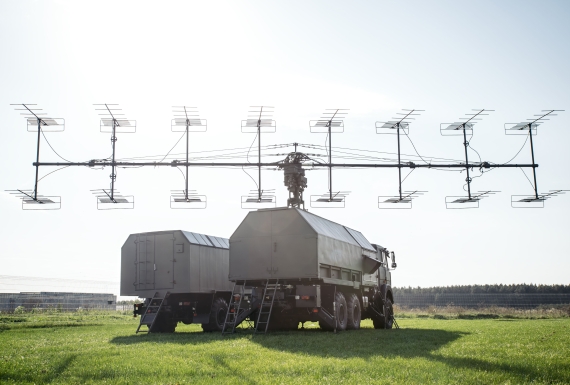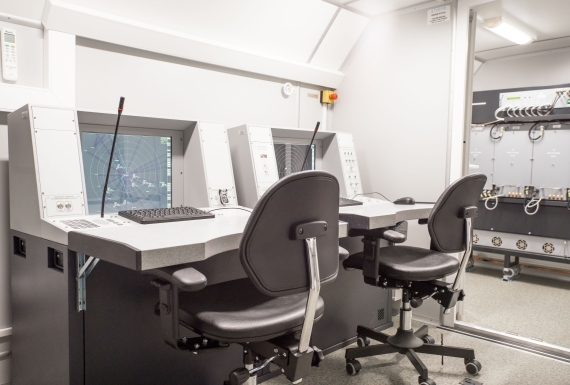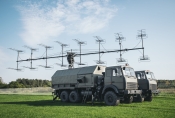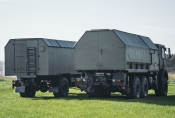P-18ML
- Home
- Radar systems
- P-18ML
Ground-based long-range VHF surveillance radar P-18ML is offered as the modernized follow-on to its prototype, the analogue P-18 (1RL131 Terek, "Spoon Rest").
As a result of upgrade the radar detection performance is efficiently improved. P-18ML features automatic tracking capability as well as acquisition of data from other surveillance radars and height-finders. Data can be exchanged over provided communication channels in approved format.
Design options:
Various chassis configurations are available. The number of vehicles is decreased. Two power generators are accommodated in a dedicated compartment of the antenna mast vehicle or on separate vehicles. Other design options are possible: radar equipment can be placed on a single semitrailer or on trailers without vehicle chassis.
|
Parameter |
Before upgrade |
After upgrade |
|
Range of working frequencies |
150 - 170 MHz |
140 – 180 MHz |
|
Frequency agility: |
||
|
electromechanical |
electronic |
|
4 fixed frequencies |
200 kHz |
|
n/a |
10 kHz |
|
Types of transmitted probing pulses: |
||
|
6 μs |
6 μs |
|
|
|
|
|
13 x 6 μs |
|
|
42 x 6 μs |
|
Transmitter pulse power / signal energy |
180 kW/ 1.5 J |
8 kW/ 2 J |
|
Capability of instant probing signal power and structure changes |
Not implemented |
implemented |
|
Detection range for a target with RCS of 2.5 m2: |
|
|
|
- |
2.7 km |
|
28/30 km |
30/32 km |
|
50/60 km |
60/70 km |
|
65/75 km |
70/80 km |
|
90/110 km |
110/120 km |
|
175/250 km |
300/360 km |
|
Detection accuracy: |
|
|
|
1400 m |
180 m |
|
1.5° |
0.4° |
|
Resolution: |
|
|
|
2000 m |
1200 m |
|
8° |
8° |
|
Range of MTI |
- |
0 – 400 km |
|
Clutter suppression ratio |
- |
> 40 dB |
|
Dynamic range of receiver and digital signal processor |
- |
Up to 100 dB |
|
Automatic control of upgraded height-finders |
- |
implemented |
|
Number of controlled height-finders |
- |
Up to 2 |
|
Start-up time |
8 min |
3 min |
|
Power consumption |
10 kW |
6 kW |
The radar equipment cabin is fully upgraded. Frequency range is expanded to 140 - 180 MHZ, the number of working frequencies is increased from 4 to 200, the capability of instantaneous electronic frequency agility is added. Radar transmitter and receiver feature solid-state components only. The transmitter has a modular design and provides “soft-failure” redundancy: failure of individual module leads only to partial reduction in power.
Antenna-mast assembly is equipped with a new 50 Hz asynchronous motor controlled by a variable-frequency drive as well as new antenna tilt sensor.
P-18ML radar remains a two-dimensional system and is used to find azimuth and range. Altitude can be obtained by interfacing with upgraded height-finding radars, in this case radar and height-finder operate as a 3D radar complex. Parameters of transmitted signal as well as parameters of signal processing after reception can be set at the operator workstation, secondary processing and tracking are performed at the remote workstation. Both workstations are installed in the equipment cabin in standard configuration.
As an option, ground interrogator can be controlled from the radar with the assignment of aircraft state identification status.
All air situation is automatically recorded with playback capability of playback and report generation.
P-18ML radar features efficient protection against pulse interference and active jamming. The operator workstation graphically presents noise to the operator allowing for visual assessment of jamming and interference at given frequency and bearing of a jammer. Jamming protection is achieved through expansion of the dynamic range of the signal processor and capability of quick electronic frequency shifting. Passive interference is rejected through digital MTI and generation of adaptive clutter map.
